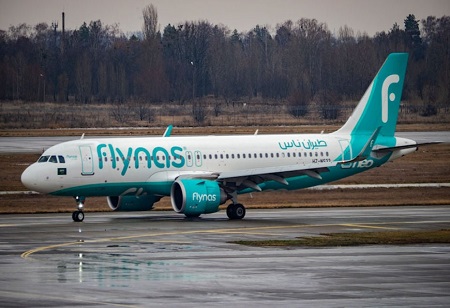
According to a report, low-cost airline flynas of Saudi Arabia plans to expand its worldwide reach by building new offices in two nations.
The airline's action is consistent with its ambition to rank among the top five discount airlines globally and the largest in the Middle East.
In an effort to double the size of its activities, the report also stated that flynas would apply for Air Operator Certificates in two unnamed nations.
The aviation industry in Saudi Arabia is receiving billions of dollars in investments as the country prepares for the future, when tourism is expected to be one of the key drivers of its economy. In order to achieve the objectives set forth in Vision 2030, the Kingdom is currently steadily diversifying its revenue.
The Riyadh-based airline is looking to play part in the Kingdom’s aviation push, with a plan to expand its existing fleet to 250 while also adding widebody models such as the Boeing 787 and Airbus SE A350 to its existing array of narrowbody carriers.
Flynas announced earlier in January that it doubled its yearly growth in operation and performance during 2022, with a 91 percent increase in passengers to 8.7 million, a 45 percent increase in flights to 66,000, and a 46 percent increase in seat capacity.
In a press release, Bander Almohanna, CEO and managing director of flynas, stated that the company's annual results "confirm the progress in the company's strategic plan with the receipt of 8 new Airbus A320neo and joining 2 Airbus A330 aircraft, which will contribute to serving the pilgrims and Umrah performers as well as expanding to new markets."
Opening a new airport in Riyadh and starting a new airline are two of the Kingdom's major aviation endeavours designed to meet the growing demand.
Both the airport and the airline will be owned by Saudi Arabia’s Public Investment Fund which holds $607 billion worth of assets under management, according to data from the Sovereign Wealth Fund Institute.
Saudi Arabia’s National Aviation Strategy aims to increase air connectivity to 250 destinations, reaching 330 million passengers, and double air cargo capacity to 4.5 million tons by 2030.
We use cookies to ensure you get the best experience on our website. Read more...